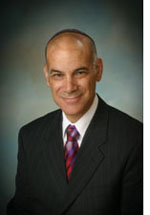By Rabbi Leonard Rosenthal

SAN DIEGO — Back in March, I wrote about the Israeli government agreeing to establish an egalitarian prayer space along the Kotel extension, south of Robinson’s Arch.
At that time I wrote: “From now on the State of Israel recognizes three Western Wall prayer areas: Male Orthodox, Female Orthodox, and a Pluralistic-Egalitarian section where women and men may pray together.
This will also be a space where women can pray with Tallit and Tefillin and read the Torah without being harassed. There will be one combined Western Wall entrance for all worshipers and visitors, who will then be allowed to choose one of the three prayer areas.”
Unfortunately, that is now old news. The Israeli government has delayed implementing the agreement due to the pressure from the ultra-Orthodox parties within the Knesset. Furthermore, Israel’s Masorti (Conservative) Movement reported that on Tuesday, June 14: “An extreme group, aided by police protection and led by Rabbi Shlomo Amar, Chief Rabbi of Jerusalem (a position paid by taxpayer money) arrived at the Robinson’s Arch area of the Kotel.
“This is an area which for more than 15 years has been specifically set aside for use by Masorti and others who wish to have egalitarian prayer. Amar’s group set up a mechitza to separate men and women and proceeded to daven. This was, of course, less a statement of piety than an effort to deliberately provoke.”
Since the government was not fulfilling its promises and obligations, Israel’s Conservative and Reform movements held a prayer service in protest on the Kotel plaza. They were harassed and spit upon by some ultra-Orthodox Jews.
I am saddened and troubled by the Israeli government’s backtracking and once again acquiescing to Orthodox pressure and blackmail. As supporters of Israel, we call upon the Israeli government to honor its promises and to promote freedom of religion for Jews as well as non-Jews in the Jewish State.
Parashat B’haalotcha begins with God telling Moses to command Aaron, the High Priest, to light the lamps of the Menorah each evening at dusk. God further said to Moses: “This is how the Menorah (Lamp Stand) was made: it was hammered work of gold, hammered from base to petal. According to the pattern that the Lord had shown Moses, so was the Lamp Stand made.” (Num. 8:4)
The Torah could have simply said “This is how the Menorah was made.” The word “this” in Num. 8:4 seems to be superfluous. In accordance with Rabbinic tradition, Rashi finds an additional lesson to learn from the extra word: “The word ‘this’ indicates to us that the Holy One Blessed Be God showed it (the Menorah) to him (Moses) with God’s finger because Moses was puzzled about its construction. And this is why the Torah says: ‘This is how the Menorah was made.'” (Rashi on Num. 8:4)
But Rashi’s answer leads to a further question: What about the Menorah was so complex that God had to show him the blueprints and point out every detail with God’s finger? Why was Moses more puzzled by the construction of the Menorah than anything else in the Mishkan?
Rabbi Shlomo Kluger (1783-1869) provides an answer. He explained that the parts of the Menorah symbolize different types of Jews: young, old, Ashkenazic, Sefardic, Chassidim, Mitnagdim, etc. Just as the Torah says that the Menorah was to be made of one piece of metal, so should all Jews, despite their differences, be part of the same people.
This is what troubled Moses and required God’s help: not how to build the Menorah but how to unite the Jewish people.
I share Moses’ bewilderment.
*
Rabbi Rosenthal is spiritual leader of Tifereth Israel Synagogue in San Diego. He may be contacted via leonard.rosenthal@sdjewishworld.com . Comments intended for publication in the space below MUST be accompanied by the letter writer’s first and last name and by his/ her city and state of residence (city and country for those outside the United States.)